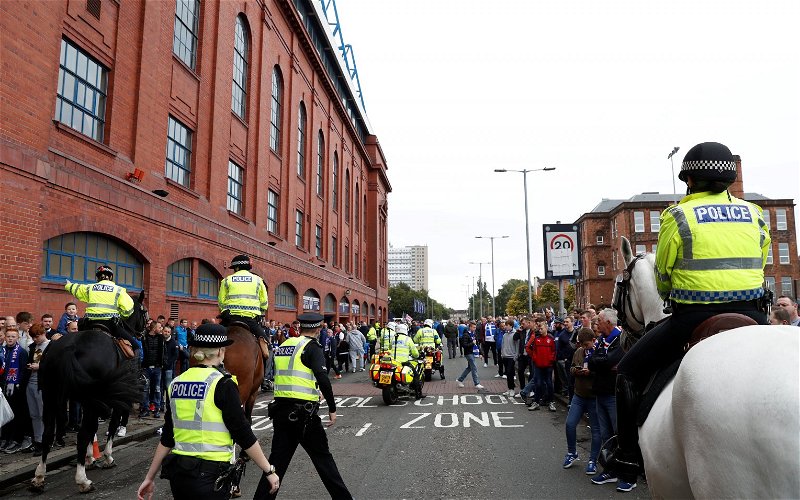Britain’s leading crowd safety expert has reviewed evidence of last week’s ‘Janefield Street Crush’ and drawn chilling parallels with the Hillsborough Disaster of 1989.
Doctor Keith Still, professor of crowd science at Manchester Metropolitan University, has reviewed the scenes and came up with some chilling early conclusions.
Upto three times as many people passed under the area below the North Stand with the attitude of Police Scotland as concerning and worrying as the actual incident itself.
CCTV footage should have provided plenty of early warning signals that things weren’t right with no concerns raised until the area virtually came to a halt with fans forced to climb a wall to escape.
While the Hillsborough Disaster was tragic the way that South Yorkshire Police covered their tracks, deflected blame from their own failings and accused supporters was as big a scandal.
The early signs from last Sunday are that Police Scotland have engaged in a similar exercise with an early ‘didn’t we do well’ statement being issued at the same time as claims of a broken turnstile emerged.
In the Daily Record Still explains: “Photographic and video evidence from the incident shows people physically in contact with one another.
“It shows the safe limit of fans has been grossly exceeded. It’s clearly a dangerous situation. At low density, people filter through safely.
“If the density is too high, there’s nowhere for them to go and, as in this case, it’s a serious risk to life and limb.
“And if the input of fans exceeds the throughput – as appears to be the case here – it means there’s no way out for fans and it’s highly dangerous. The density of fans appears to be six to seven people per square metre – three times the maximum safe level of about two per square metre.
“The person who’s in the control room should have CCTV images or a vantage point high enough to be able to assess this.
“At too high density, any trip, slip or fall means people do not have the opportunity to react safely – and this can have a catastrophic effect. It’s just luck that the outcome wasn’t worse. Fans were climbing up fences to get away.
“This shows people were feeling a significant risk to life and limb.
“This area should never have become overcrowded in the first place.
“We need to know what precise decisions were made to move two sets of fans together in this confined space in this way. This was something I would consider to have been an ill-informed crowd management situation.
“One of the causes of accidents – right up to the level of mass fatalities – is a failure to understand the design limits of a location. I would put this incident in this category. You need to know you cannot put that many people in such a confined space.
“As an expert witness in such cases, I’d be looking for the police logs, witness accounts and CCTV footage. The risk assessment itself needs to be looked at. What have the club done to prevent overcrowding to this extent in that area?
“That is where the safety investigation should begin.”
It appears from early evidence that to ensure the safety of 800 Sevco fans the safety of 59,000 other ‘West of Scotland’ supporters was neglected.
Rather than use the tried and tested distribution model for matches at Celtic Park a far greater number of supporters had to travel along Janefield Street.
For whatever reasons it seems that no one in Police Scotland was prepared to admit that a major problem was brewing and hoped that things would sort themselves out.
Celtic issued two statements following the match but after being provided with a welter of evidence on Thursday they announced that they were setting up an independent enquiry.

